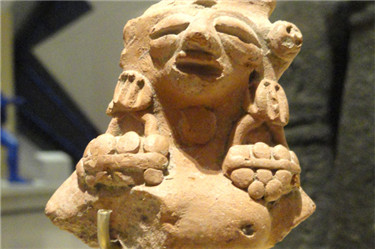
1、Harappan Civilization
哈拉帕文明
Also known as the Indus Valley Civilization, the Harappans were a group of people who lived in parts of present-day Pakistan and India. Gifted with the idea that planning cities in advance would be a good idea, their urban areas were second to none; unfortunately, due to what scientists believe to have been a massive, centuries-long drought, their culture slowly declined, never to rise again. This is currently nothing more than a theory, but it helps explain other cultural declines in the area as well.
也被称为印度河流域文明,哈拉帕人生活在今巴基斯坦和印度的部分地区。他们极有天赋的认为,良好的城市规划将是非常有益的,于是他们拥有不输任何文明的城市区域;很不幸的,基于科学家们所认为的,在经历了严重的、数个世纪之久的干旱之后,这个文化逐渐的没落了,并且再也没有复兴起来。这虽然不过是一个理论,但也的确有助于解释这一地区其他文明的衰落.
Beginning sometime in the 25th century B.C., the Harappans also developed their own language, a script with nearly 500 different characters which has not been completely deciphered even today. Their most noteworthy artifacts are seals, usually made of soapstone, which depict various animals and mythical creatures. Harappa and Mohenjo-Daro are the two largest Harappan sites, with the former labeled as a UNESCO Heritage Site. When it collapsed, the ruins of the Harappan civilization provided a template for the various other cultures which sprang up after it
哈拉帕文明始于公元前25世纪的某个时期,他们也发展出了自己的语言,一种有着近500个不同字符的文本,直到今天也未能完全破译。他们最著名的工艺品是密封印章,一般以皂石制成,其上绘有各种动物及神秘生物。哈拉帕及摩亨朱—达罗(Mohenjo-Daro)是哈拉帕人最大的两个据点,前者还是联合国教科文组织所认定的世界文化遗产。崩溃以后,哈拉帕文明的遗迹为其后涌现的诸多文明提供了样板。
n. 范围,行列,射程,山脉,一系列
v. 排












